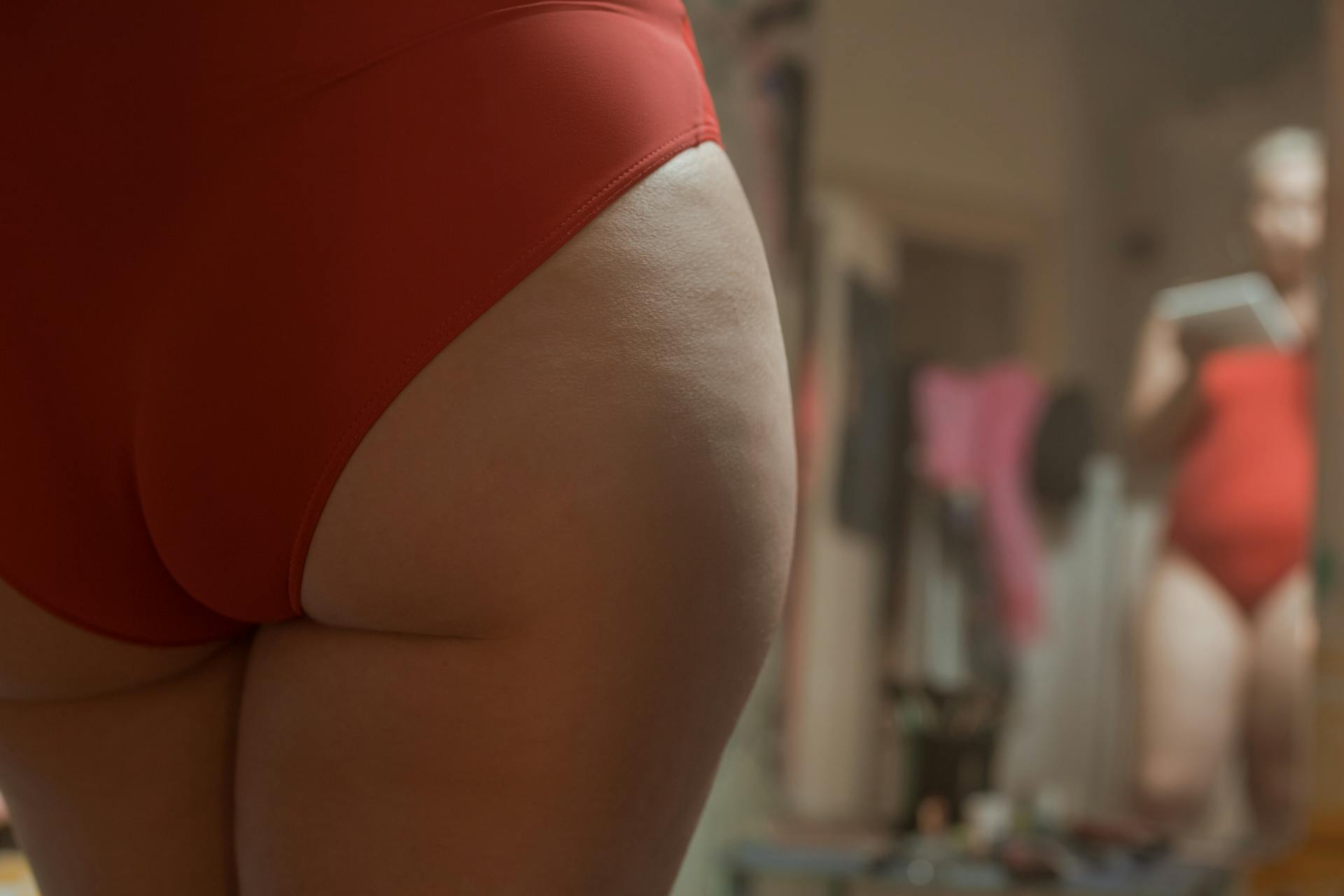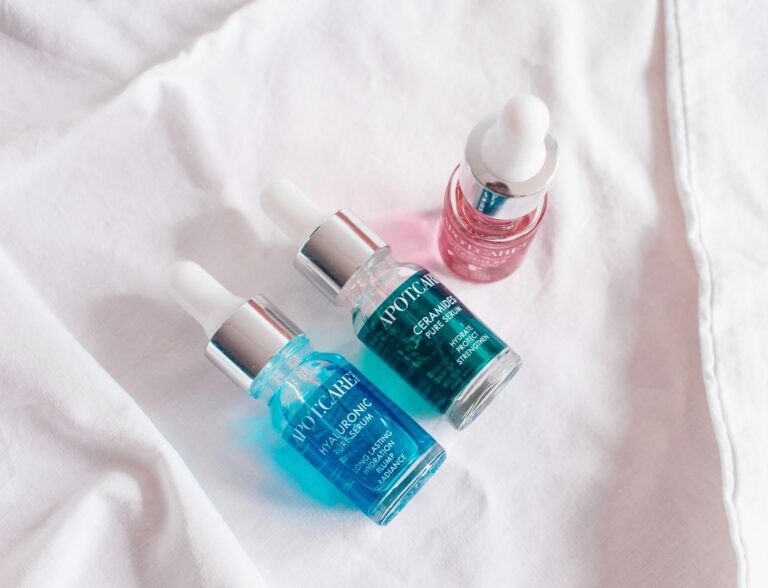
Considering dermal fillers but uncertain about their duration? You’re certainly not the only one! Many individuals in the UK look to fillers for a more youthful and refreshed appearance, yet the longevity of these treatments can differ significantly depending on factors such as the type of filler used and personal lifestyle choices.
This article aims to provide you with comprehensive information about dermal fillers—from the various types available and tips on how to extend their lifespan to insights on costs and safety considerations.
Continue reading to give the power to yourself with the knowledge needed for your beauty journey.
How Long Do Dermal Fillers Last?

When contemplating aesthetic treatments such as dermal fillers, one of the most common queries among patients in the UK is, “How long do dermal fillers last?” It’s important to understand the longevity of these non-surgical solutions if one aims to enhance facial volume and rejuvenate their appearance.
Several factors can influence the duration of the results, including the type of filler used, the injection site, and individual characteristics such as skin type and lifestyle choices.
This overview is designed to guide you through the various aspects of filler duration and maintenance, ensuring you achieve the best possible aesthetic outcomes.
Factors That Affect the Longevity of Dermal Fillers
Several factors can influence the longevity of dermal fillers, including the composition of the filler, the technique used for injection, and individual patient characteristics. For instance, while hyaluronic acid fillers are renowned for their volumising effects, their durability can vary depending on the specific product utilised, such as Juvederm or Restylane.
Additionally, elements such as skin type, lifestyle choices, and proper maintenance significantly impact how long the results will endure.
The expertise of the practitioner is also a crucial factor, as their experience can affect not only the precision of the injection but also the selection of the most suitable filler types. Post-treatment care is equally important; following aftercare instructions can help mitigate risks, such as filler migration, which may alter the appearance over time.
Furthermore, individual characteristics like age and overall skin health are significant, with younger patients typically enjoying longer-lasting results due to better skin elasticity.
Establishing a maintenance routine, such as scheduling touch-ups, can also help extend the effects, ensuring that the skin remains looking fresher and fuller for a longer duration.
Types of Dermal Fillers
Dermal fillers are available in a variety of types, each designed to address specific aesthetic concerns and achieve different results. By understanding the various types of dermal fillers, patients can make more informed choices regarding their beauty treatments.
One of the most popular options is hyaluronic acid fillers, such as Juvederm and Restylane, recognised for their ability to enhance volume and hydration in the skin. Additionally, there are other options such as calcium hydroxylapatite, poly-L-lactic acid, and polymethylmethacrylate fillers, each possessing unique properties and varying longevity.
1. Hyaluronic Acid Fillers
Hyaluronic acid fillers, such as Juvederm and Restylane, are well-regarded for their ability to provide facial hydration and enhance volume, making them some of the most popular choices in aesthetic treatments today. These temporary fillers function by attracting moisture to the skin, leading to a plump and youthful appearance.
With various formulations available, patients can select the product that best aligns with their specific aesthetic goals, whether that involves using lip fillers for a fuller pout or cheek fillers to restore facial contour.
Beyond just enhancing features, these fillers also work to smooth out fine lines and wrinkles, offering a non-invasive alternative to surgical procedures. Many patients express high levels of satisfaction, as results can be seen immediately, and any potential side effects are generally minimal and temporary.
The different formulations cater to a range of preferences and desired outcomes. It is essential to highlight the importance of skilled practitioners; their expertise is vital in ensuring natural-looking results. This helps patients achieve their aesthetic aspirations while maintaining a focus on safety throughout the entire process.
2. Calcium Hydroxylapatite Fillers
Calcium hydroxylapatite fillers, such as Radiesse, represent innovative cosmetic solutions specifically designed for volumising and reducing wrinkles. What sets these fillers apart from others is their ability to stimulate natural collagen production, which contributes to longer-lasting results.
This type of filler is particularly effective for addressing deeper wrinkles and enhancing facial structure, making it a favoured option among patients seeking non-surgical facial rejuvenation.
Building on their distinct properties, these fillers present a biocompatible option that integrates smoothly with skin tissue, resulting in outcomes that appear natural. One of the most significant advantages is their capacity to deliver immediate results while also promoting gradual improvement through the synthesis of collagen.
Patients often find comfort in the low risk of adverse reactions associated with these fillers, as well as the lasting effects that can continue for a year or more. Many individuals opt for this filler due to its versatility, as it can be applied in various situations, including:
- Correcting volume loss in the cheeks
- Jawline contouring
- Improving the appearance of hands
All of this contributes to an enhanced overall facial aesthetic.
3. Poly-L-lactic Acid Fillers
Poly-L-lactic acid fillers, such as Sculptra, are specifically designed to provide gradual and long-lasting results by stimulating collagen production in the skin. Unlike traditional fillers that offer immediate volume, these fillers encourage natural rejuvenation over time, making them an excellent option for individuals seeking subtle yet significant enhancements.
This distinctive feature contributes to the popularity of poly-L-lactic acid fillers in addressing volume loss commonly associated with ageing.
Patients receiving treatment with poly-L-lactic acid can anticipate a personalised approach, which typically involves a series of sessions spaced a few weeks apart. During these appointments, the filler is injected into targeted areas, allowing the skin to gradually restore its youthful structure.
In contrast to conventional fillers that simply fill in lines and hollows, poly-L-lactic acid works by encouraging the body to produce its own collagen, resulting in a more authentic and harmonious outcome. Many patients report a smooth transition in their appearance, with noticeable improvements occurring over several months.
It is important to set realistic expectations for results, as the full effects generally become evident after multiple treatments, leading to outcomes that are both natural-looking and long-lasting.
4. Polymethylmethacrylate Fillers
Polymethylmethacrylate (PMMA) fillers serve as a more permanent option within the spectrum of dermal fillers, providing enduring enhancements to facial structure and volume. These fillers consist of tiny microspheres suspended in a gel, creating a supportive framework that helps maintain the desired aesthetic outcomes over time.
While they can deliver effective long-term results, it is essential for individuals to be informed about the safety profile and potential risks associated with permanent fillers.
These unique properties make PMMA fillers particularly appealing to those seeking lasting solutions for facial ageing, especially in enhancing volume in areas such as the cheeks and nasolabial folds. Unlike temporary fillers that necessitate regular maintenance, PMMA offers the advantage of requiring fewer touch-ups, which can be especially attractive for individuals desiring long-lasting effects.
Choosing skilled practitioners is crucial, as improper application can lead to complications or dissatisfaction with the results. It is important for individuals to engage in thorough consultations, considering their specific needs while remaining aware of potential risks, such as filler migration or unforeseen allergic reactions.
How to Extend the Lifespan of Dermal Fillers?

Extending the lifespan of dermal fillers is essential for achieving your aesthetic goals and ensuring that the results last as long as possible, while also minimizing the risk of dermal migration.
By following the appropriate aftercare instructions and embracing a healthy lifestyle, you can significantly enhance the longevity of your fillers. Important practices to consider include:
- Avoiding excessive sun exposure
- Staying well-hydrated
- Following any specific recommendations given by your practitioner
1. Follow Aftercare Instructions
Following aftercare instructions is vital for optimal recovery and extending the lifespan of dermal fillers. Patients should be mindful of potential side effects, such as bruising and swelling, and adhere to the recommended post-treatment care to minimise these effects. Simple steps, like avoiding strenuous exercise and keeping the treated area clean, can significantly influence the results.
It is also essential for individuals to avoid direct sun exposure and refrain from using harsh skincare products for at least 48 hours following the treatment. Applying a cold compress can be beneficial for reducing swelling, while staying well-hydrated supports the healing process.
Patients are strongly encouraged to pay close attention to their healthcare provider’s advice, as everyone’s skin reacts differently to these treatments. Managing any discomfort with over-the-counter pain relief, as recommended by professionals, may further enhance recovery.
By following these guidelines, patients can contribute to the longevity and effectiveness of the fillers, ensuring aesthetically pleasing outcomes.
2. Avoid Sun Exposure
Avoiding sun exposure is crucial for protecting your skin and preserving the results of your dermal fillers. Sun damage can accelerate the ageing process and negatively affect skin hydration, ultimately diminishing the effectiveness of your aesthetic treatments. By incorporating sun protection into your daily routine, you promote healthier skin and enhance the longevity of your fillers.
The ultraviolet (UV) rays from the sun can penetrate deeply into the skin, causing both immediate and long-term damage, such as sunburn, pigmentation issues, and changes in skin texture. This damage often leads to a reduction in volume and elasticity, which can counteract the benefits of dermal fillers.
To protect against these harmful rays, it is advisable to include a broad-spectrum sunscreen with at least SPF 30 in your skincare regimen. It is important to apply it generously and reapply every two hours. Additionally, wearing protective clothing, such as hats and sunglasses, can provide an extra layer of defence against UV exposure, helping to keep your skin healthy and youthful for as long as possible.
3. Maintain a Healthy Lifestyle
Maintaining a healthy lifestyle is essential for prolonging the results of dermal fillers and enhancing overall skin quality. Proper hydration, a balanced diet rich in vitamins and minerals, and regular exercise all contribute to healthier skin and improved facial volume. By adopting these healthy habits, patients can effectively support the outcomes of their aesthetic treatments and achieve better long-term results.
Incorporating a variety of fruits and vegetables into daily meals can significantly support collagen production. Additionally, omega-3 fatty acids found in fish and nuts are beneficial for maintaining skin hydration and resilience. Drinking plenty of water throughout the day not only helps to flush toxins from the body but also keeps the skin plump and elastic.
Establishing a skincare routine that includes gentle cleansing and moisturising is equally important, as it helps to prevent dryness and irritation. Regular sun protection is crucial to guard against UV damage, which can accelerate ageing and diminish the benefits of treatments.
By making these conscious choices, individuals can create a synergistic effect that enhances both skin health and the longevity of any fillers they receive.
When Should You Get Touch-Up Treatments?
Determining the right time for touch-up treatments with dermal fillers is essential for achieving and maintaining your desired aesthetic results. The frequency of maintenance injections largely depends on the type of filler used.
For instance, hyaluronic acid fillers generally last between six and twelve months, whereas other types might provide a longer duration before a touch-up is necessary. Understanding these timelines can help patients plan their treatments effectively.
1. Hyaluronic Acid Fillers (6-12 Months)
Hyaluronic acid fillers typically require touch-up treatments every 6 to 12 months to maintain optimal facial volume and achieve the desired results. It is advisable for patients to keep an eye on their appearance and consult their practitioner when they notice a decline in volume or hydration. This proactive approach helps ensure sustained enhancement and satisfaction with aesthetic outcomes.
The longevity of hyaluronic acid fillers can vary significantly due to individual factors, including metabolism, skin type, and lifestyle choices. Many users find that their results may begin to fade slightly sooner or last longer, depending on their unique body chemistry.
For instance, some patients report that those with more active lifestyles may need more frequent touch-ups to retain fullness, while others may enjoy longer-lasting effects.
It is essential for individuals to discuss their specific needs and aesthetic goals with their practitioner. This allows for the development of personalised treatment plans that can adapt to their changing requirements over time.
2. Calcium Hydroxylapatite Fillers (12-18 Months)
Calcium hydroxylapatite fillers, such as Radiesse, generally necessitate touch-up treatments every 12 to 18 months. These fillers are known for their longer-lasting results, which can be attributed to their unique composition that promotes collagen production. This process not only enhances facial aesthetics but does so in a natural manner over time.
Plus reducing the frequency of touch-ups, these fillers offer a fuller, more youthful appearance without the sudden or artificial look that can sometimes be associated with other filler options. Many patients express high levels of satisfaction following their treatments, primarily because the gradual improvement in texture and volume feels much more organic.
It is essential for individuals to schedule professional follow-ups to effectively assess their progress and make any necessary adjustments. This ongoing collaboration with a qualified provider is key to achieving optimal results and underscores the significance of personalised care in aesthetic procedures.
3. Poly-L-lactic Acid Fillers (2-3 Years)
Poly-L-lactic acid fillers are known for providing long-lasting results, with touch-up treatments typically recommended every 2 to 3 years. Their unique formulation enhances volume while also stimulating collagen production, which promotes healthier skin over time. This characteristic makes them an attractive option for individuals seeking enduring aesthetic improvements.
Many people find that these results align seamlessly with their aesthetic goals, as these fillers can subtly restore a youthful appearance without requiring frequent treatments. The gradual enhancement closely resembles the natural ageing process, allowing for a more organic look as time progresses.
Patients often appreciate the ability to maintain their desired appearance with minimal maintenance and infrequent touch-ups, enabling them to focus on their daily lives without the constant worry of visible signs of ageing.
In this manner, poly-L-lactic acid fillers not only help individuals meet their expectations but also enhance their confidence, fostering a lasting sense of satisfaction with their appearance for years to come.
4. Polymethylmethacrylate Fillers (Permanent)
Polymethylmethacrylate fillers are classified as permanent, meaning they generally do not require touch-up treatments like temporary fillers. It is essential for patients to understand the maintenance involved and the potential risks associated with permanent fillers to ensure they are satisfied with their aesthetic results.
Patients should recognise that opting for a permanent filler may entail specific maintenance considerations, such as the possibility of needing corrective procedures in the future due to unexpected outcomes or the natural ageing process.
The risks associated with permanent fillers can include complications like infection, migration, or granuloma formation, which can be difficult to manage. This highlights the importance of making informed decisions; prospective patients should engage in thorough consultations with experienced practitioners who can offer personalised insights and recommendations.
This approach ensures individuals can make educated choices that align with their aesthetic goals while also prioritising their long-term well-being.
How Much Do Dermal Fillers Cost in the UK?

Understanding the cost of dermal fillers is crucial for patients in the UK who are considering aesthetic treatments. Prices can vary notably based on several factors, including the type of filler used, the specific area being treated, and the practitioner’s level of expertise.
On average, patients should anticipate not only the treatment costs but also any consultation fees, both of which play a significant role in overall budget planning for their aesthetic enhancements.
Are Dermal Fillers Safe?
The safety of dermal fillers is a significant concern for many individuals considering these aesthetic treatments. Generally speaking, dermal fillers, particularly those that have received approval from the MHRA, are considered safe when administered by experienced practitioners.
However, it is important to recognise that, like any medical procedure, they may come with side effects, including bruising, swelling, and allergic reactions. Therefore, it is crucial for patients to be well-informed about the potential risks involved.
Potential Risks and Side Effects of Dermal Fillers
While dermal fillers are generally regarded as safe, it is important for patients to be aware of the potential risks and side effects associated with their use. Common side effects include bruising and swelling at the injection site; however, in rare cases, more serious reactions such as allergic responses and filler migration may occur. Understanding these risks is essential for making informed decisions regarding aesthetic treatments.
It is also crucial to recognise that an individual’s skin type and medical history can significantly affect their experience with fillers. Some patients might encounter less common effects, such as lumps, nodules, or even vascular occlusion, where the filler unintentionally obstructs a blood vessel.
After receiving fillers, it is important to follow the prescribed post-treatment care, which may include avoiding strenuous activities or excessive sun exposure.
Maintaining open communication with practitioners is vital for addressing any concerns that may arise, thereby ensuring a smoother recovery process and optimal results. By being proactive about these factors, patients can mitigate risks and enhance their overall aesthetic experience.
How to Choose a Qualified Practitioner for Dermal Fillers?
Selecting a qualified practitioner for dermal fillers is an essential step in ensuring a safe and satisfactory experience for patients.
It is important for patients to seek out skilled practitioners who possess extensive training and experience in aesthetic procedures. Engaging in a comprehensive consultation can offer valuable insights into a practitioner’s approach and help build the trust necessary for achieving the desired results.
Frequently Asked Questions
How long do dermal fillers last and what factors affect their longevity?
Dermal fillers typically last between 6-18 months, depending on the type of filler used and the individual’s metabolism. Factors such as age, lifestyle habits, and injection technique can also affect the longevity of dermal fillers.
Can dermal fillers be reversed if I am not satisfied with the results?
In most cases, dermal fillers can be reversed using an enzyme called hyaluronidase. This enzyme breaks down the hyaluronic acid in the filler, allowing the body to absorb it more quickly. It is important to consult with a trained professional if you are considering reversing your dermal filler treatment.
Are there any risks or side effects associated with dermal fillers?
As with any medical procedure, there are potential risks and side effects associated with dermal fillers. These can include bruising, swelling, infection, or allergic reactions. It is important to choose a reputable and experienced practitioner to minimise these risks.
How do I know if dermal fillers are the right treatment for me?
Dermal fillers are a popular choice for those looking to enhance their facial features or reduce signs of aging. However, it is important to consult with a medical professional to determine if dermal fillers are the right treatment option for you. They can assess your individual concerns and provide personalised recommendations.
How often will I need to get dermal filler treatments?
The frequency of dermal filler treatments varies for each individual and depends on factors such as the type of filler used and how quickly your body metabolises it. Generally, touch-up treatments are recommended every 6-12 months to maintain results.
Are dermal filler treatments painful?
Most dermal filler treatments involve minimal discomfort, as the fillers often contain lidocaine to numb the area. Additionally, ice or numbing cream can be applied before the injections to further reduce any potential pain.






